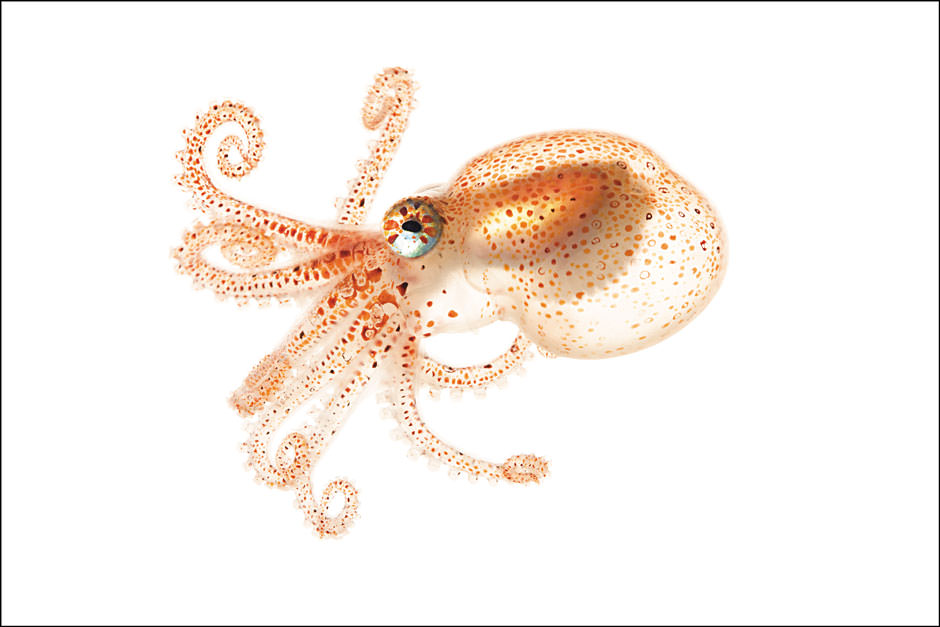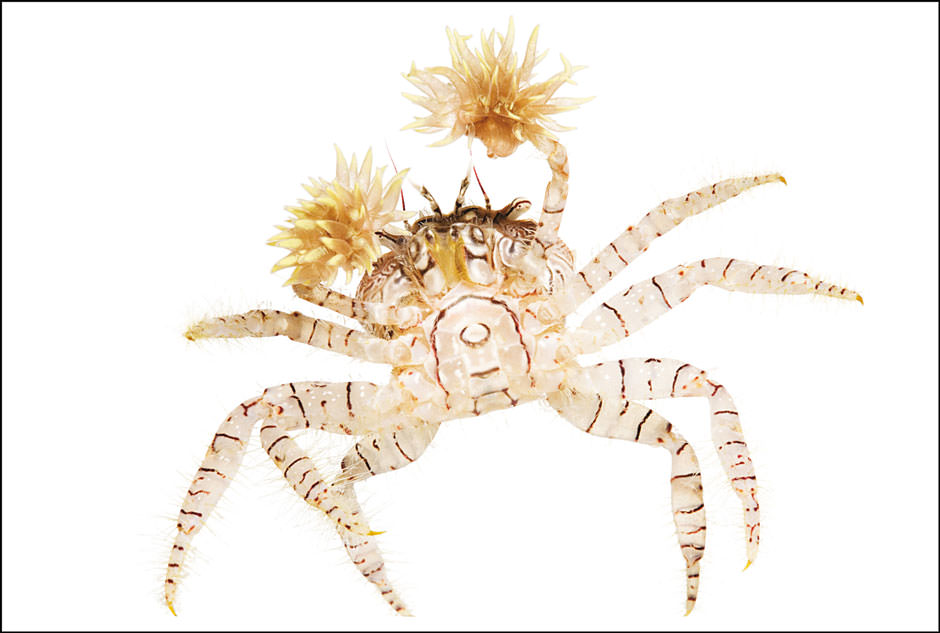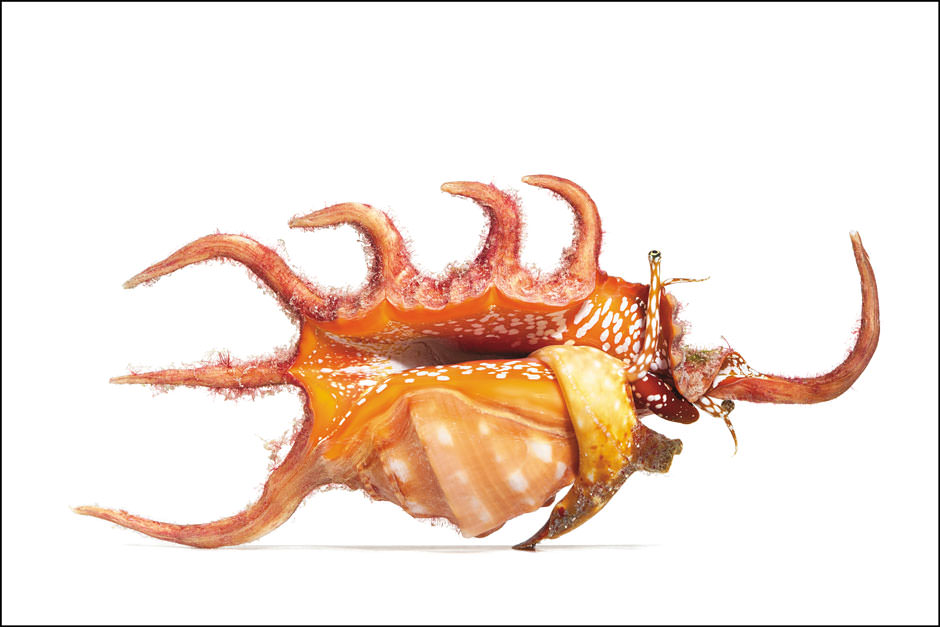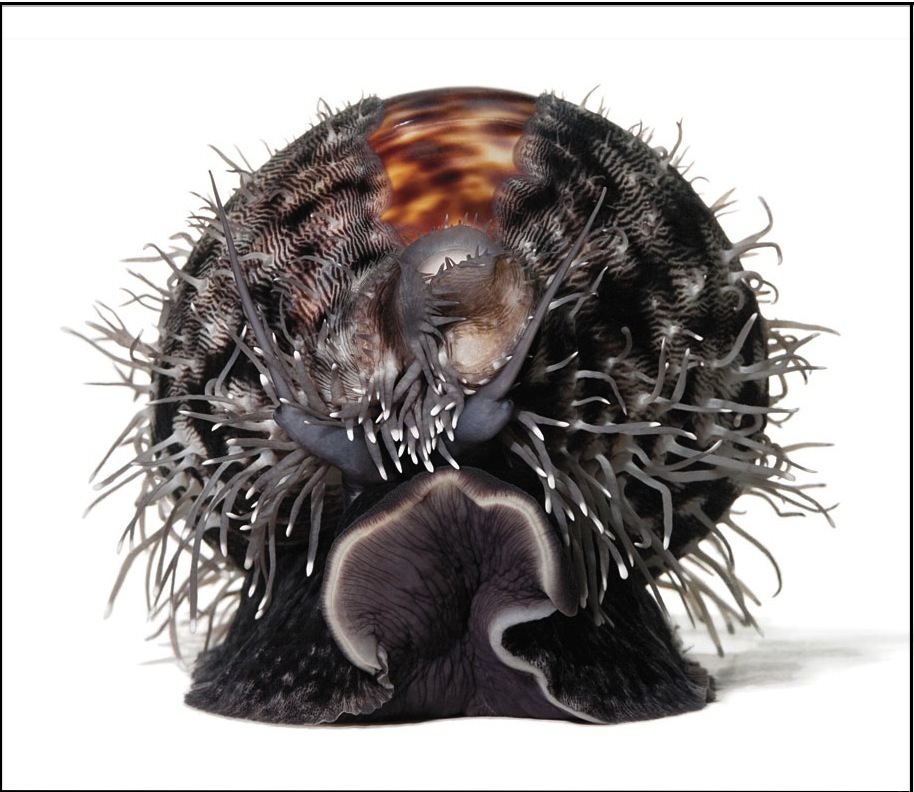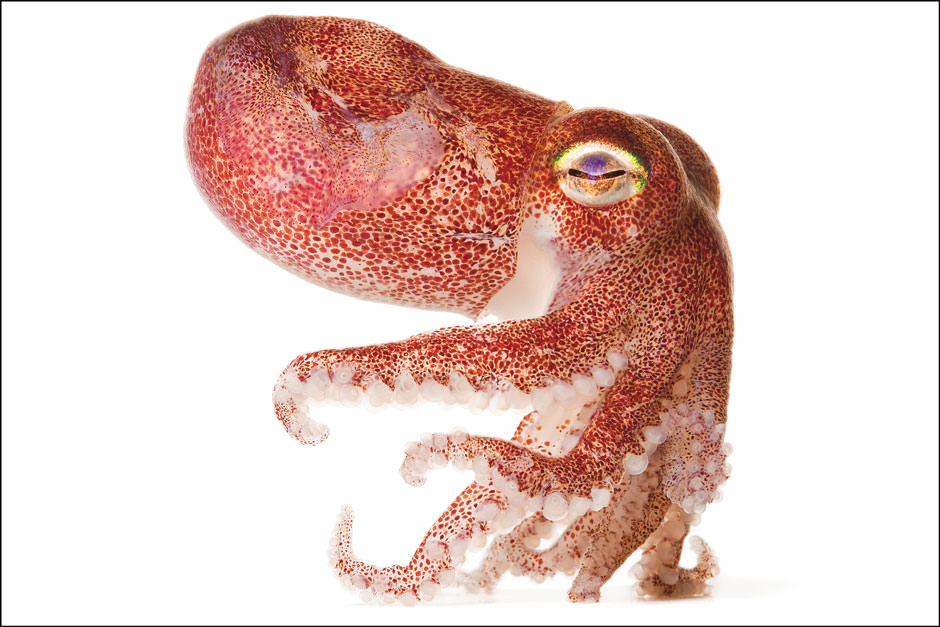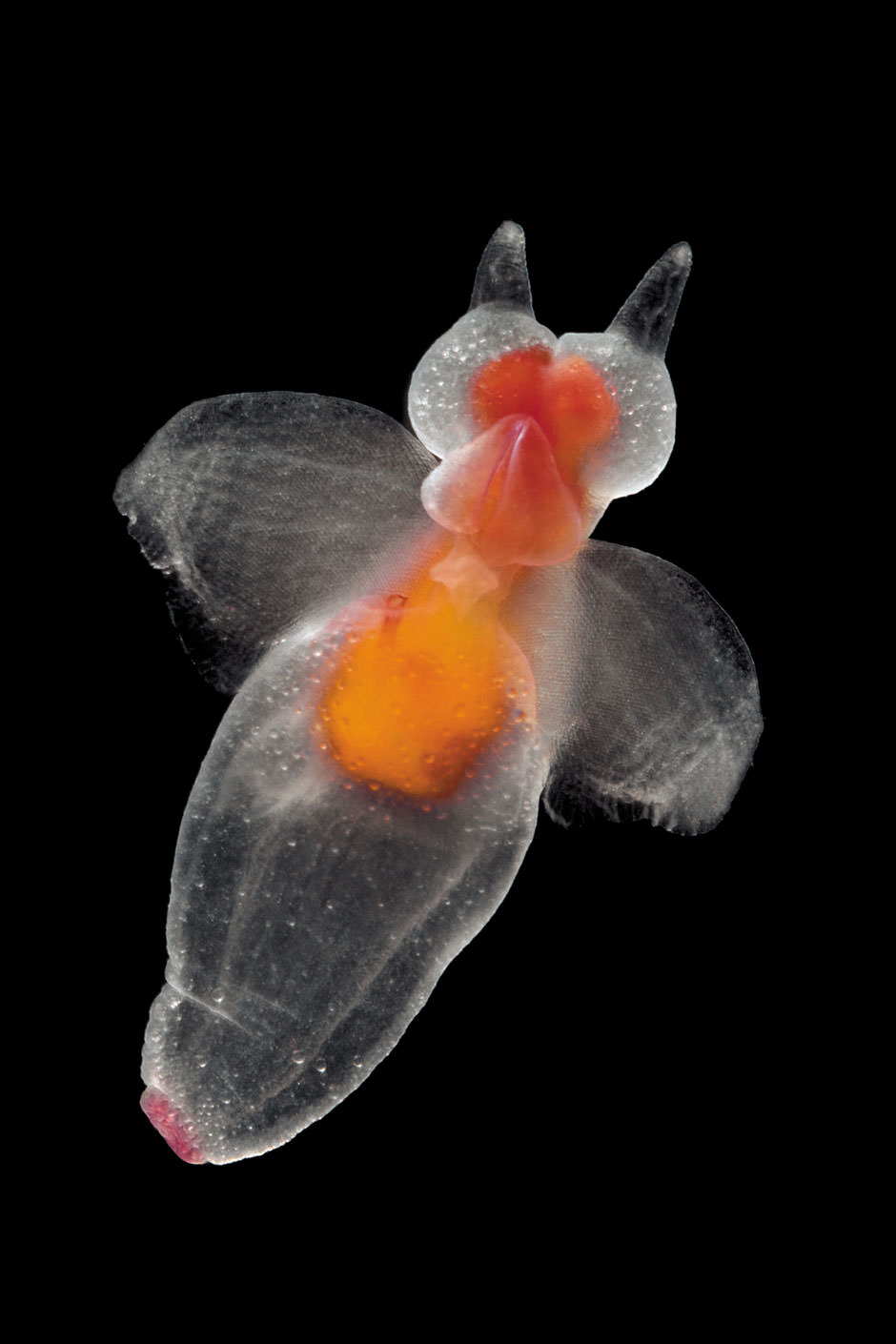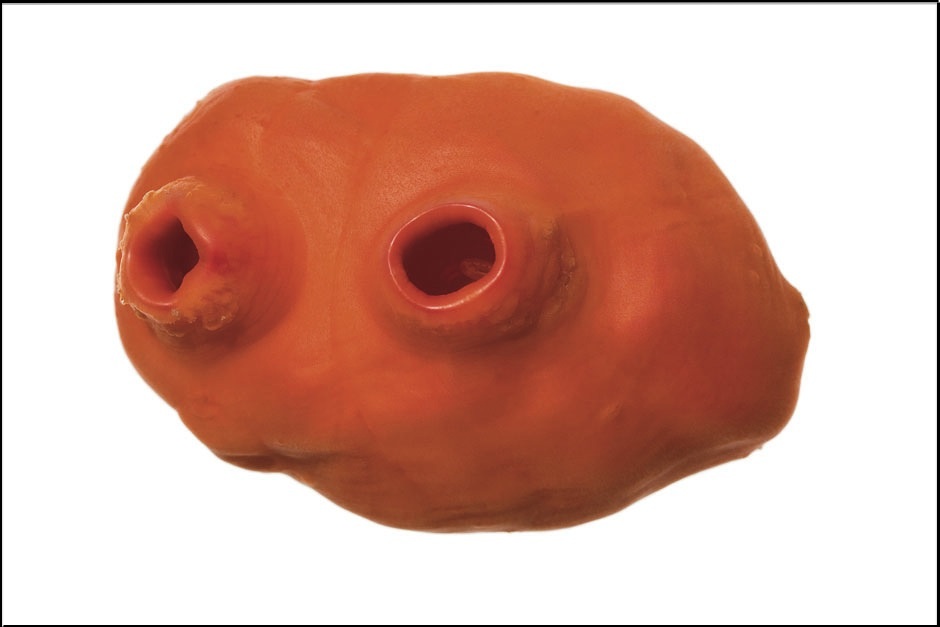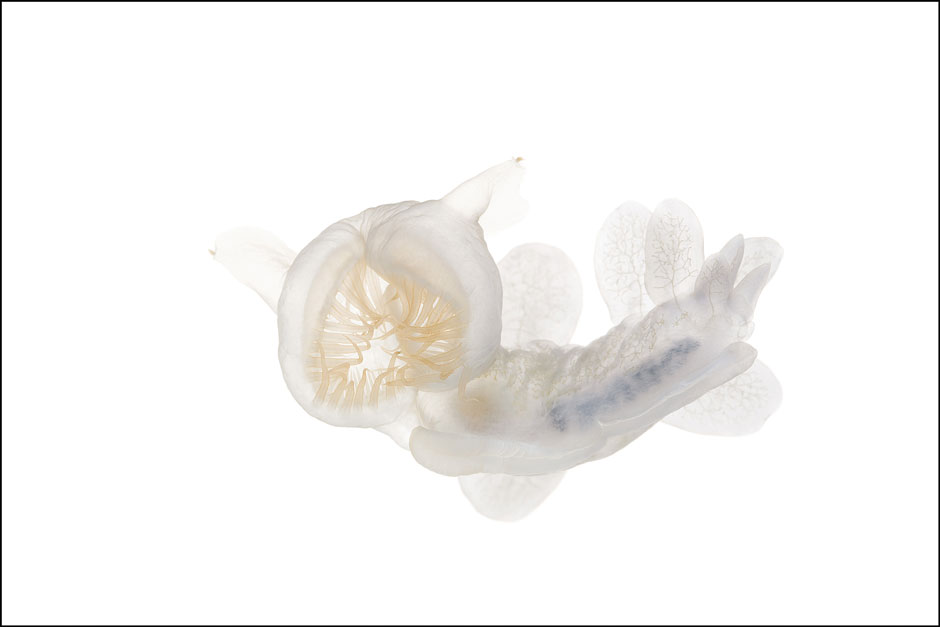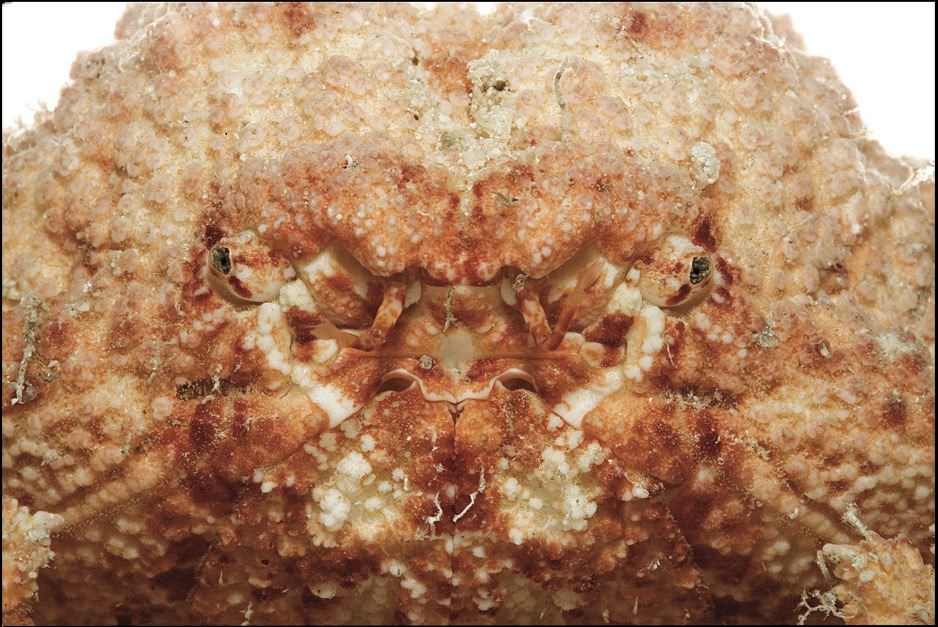“Always revelations,” Susan Middleton wrote in the diary she kept while making the extraordinary photographs that grace Spineless: Portraits of Marine Invertebrates. The book opens with an image that encapsulates the spirit of the work: a tiny, diaphanous octopus shot against a white background—so exquisite, so magically captured that it’s not clear whether the image is a photograph or a painting.
Marine invertebrates—from octopuses to hermit crabs and creatures like holothurians which are so unfamiliar that their images could be an animal or a bizarre flower—are the focus of the book. At times the mundane is transformed—as when a clam shell, whose bleached valves are familiar to every beach-comber, is seen alive, as a great, red-tentacled wonder. Varying from foot-long mollusks to speck-sized shrimps, invertebrates like those depicted are the largely silent majority of species on Earth. Yet by virtue of size, camouflage, or hard-to-access environments, they are all too often unobserved. To enter their world through this book is to dwell, albeit briefly, in a Lilliputian realm far more mysterious, breathtakingly beautiful, and mystifying than our own.
Middleton’s subjects were collected from near-shore marine environments or tropical reefs. They include species, such as scallops, more often seen on dinner plates, but which as living creatures astonish. Shooting her subjects against neutral backgrounds strips away the camouflage and distractions, and allows us to focus on the wonder of the animal depicted. Though not taken with a didactic purpose in mind, the images will doubtless be used by scientists for years to come. Indeed, two included species—the Kanaloa Squat Lobster and the Wanawana crab—are new discoveries, and the individuals depicted were designated type specimens (the specimen that defines a species) by taxonomists.
For the non-expert reader, Spineless reveals a world where hermit crabs resemble wizards carrying their own magic mountains on their backs, and where worms are transformed into exquisite, pearly necklaces. Many of Middleton’s subjects are translucent, allowing a particularly intimate acquaintance with the hungry, gorged, and even pregnant by the most casual of viewers.
Sadly, the world’s coral reefs, which are home to a goodly number of the species featuring in the book, are in grave danger. Degradation due to overfishing, use of explosives, and toxic runoff is increasingly joined by coral bleaching triggered by global warming, and ocean acidification resulting from elevated CO2 levels. For future generations, Spineless may sadly prove to be a priceless historic document of a lost world.
Spineless is published by Harry N. Abrams.


